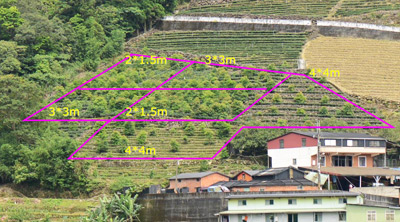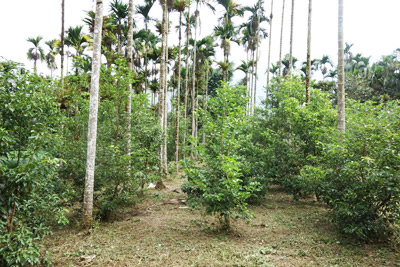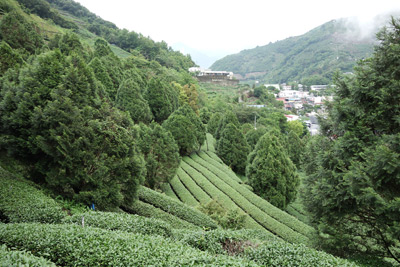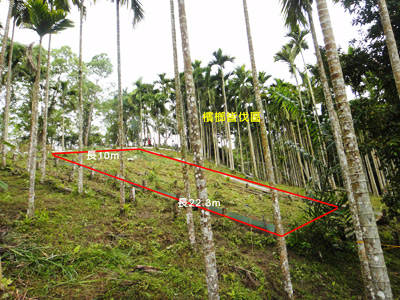There are about 58.5% of forest lands in Taiwan. Upland area is very vulnerable and unstable due to its rugged topography. However, the upland villages reply heavily on agricultural practices for livelihood. On the other hand, the Taiwan administration is seeking for sustainable management and increasing carbon sink solutions on these forest lands. Agroforestry can be a solution to harmonize landowners’ profit and natural sustainability. The main goal of our research is to plant trees on farmlands and develop sustainable agroforestry systems adaptable in upland areas of Taiwan.
Agroforestry demonstration sites
To disseminate agroforestry concept and to encourage farmland owners to join agroforestry, Taiwan Forestry Research Institute, cooperating with communities and industries, established three agroforestry demonstration sites.
The three demonstration sites were Pinglin (northern Taiwan, Tea-Cinnamomum kanehirae system), Yuchi (central Taiwan, Betel nut-Cinnamomum kanehirae system), and Kalala (eastern Taiwan, Betel nut-coffee-Cinnamomum osmophloeum system). All the agroforestry systems can be easily copied to adjacent areas or similar regions.

Fig. 1 Trees were interplanted at different densities at Pinglin demonstration site

Fig. 2 Yuchi demonstration site (Betel nut-Cinnamomum kanehirae system)
Research and preliminary results
Researchers at TFRI have been collecting data on weather, soil, biodiversity, interplanted tree growth, agricultural production at our agroforestry study sites. The data will provide more science evidence on the relationship of agroforestry and sustainable management.
1. Taiwan Incense Cedar, Calocedrus formosana, were interplanted at open tea plantation in low density, 100 trees/ha. After planting 16 years, the estimate of CO2 accumulations of these Calocedrus formosana was as high as 75 ton/ha.

Fig. 3 The low-density interplanted Taiwan Incense Cedar are growing fast and robust at Lushan study site
2. We suggest to keep betel nut trees at early stage of plantation if Calocedrus formosana is well tended. For example, Calocedrus formosana is about to replace betel nut trees after 13 years interplanted in betel nut plantation at Henlu, Nanto County. At a 16-year old Calocedrus formosana-betel nut system (density 1,750 trees/ha), the average height and BA of Calocedrus formosana is close to pure plantation. The estimate of CO2 accumulations of these Calocedrus formosana was 282 ton/ha, which is a little higher than pure plantation.
3. To understand and monitor agroforestry management effect on surface runoff and soil losses runoff and soil losses, 22.5*10 m monitoring plots were set up at our agroforestry sites. Adding tree planting area in agroforestry will increase the consumption of evaporation and can contribute to reduce runoff and surface erosion.
Based on runoff and soil erosion monitoring data at our agroforestry study sites, surface runoff amounts of all treatments were between 0.113 ~0.185 mm. Soil erosion amounts were less than Taiwan average erosion rate (5.2 mm per year).

Fig. 4 Runoff and soil losses monitoring plot at Kalala demonstration site
����